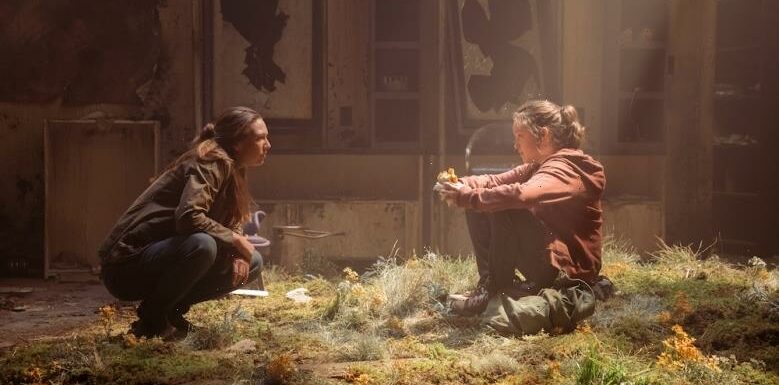
There’s a tension in “The Last of Us” that has nothing to do with pushing back ravenous infected hordes or with Ellie (Bella Ramsey) and Joel (Pedro Pascal) pulling each other through near-death situations. The HBO series goes out of its way to emphasize the ever-present terror of living in a zombified world and the beauty of its broken landscapes, revealing how both things are always true.
The show’s environment changes dramatically as Ellie and Joel cross the country, keeping the series from falling into the trap of a grim color palette or an endless expanse of jagged concrete. But the show’s cameras also play an integral part in building compositions that show us what the characters fear, what they desperately hope for, and what they’ve lost all at once.
Cinematographer Ksenia Sereda, who set the groundwork for the series as the DP for Episodes 1 and 2 as well as shooting the crucial lookback in Episode 7, described the show’s camera as a scene partner that gives “The Last of Us” its sense of immediacy and groundedness. The key is to capture as many layers of the world as possible: Ellie’s anguished, shocked expression after killing a man and the arresting painterly quality of the blood that then dots her face.
“The Last of Us”
Liane Hentscher/HBO
“[The series is] working with so many textures and layers. When you are [shooting] through the characters’ perspective, you need to be inside there but at the same time you need to be very connected with the environment around them,” Sereda told IndieWire. The camera in “The Last of Us” seeks out environmental details that are extremely beautiful in their own right, whether motes of dappled light in a field of strawberries or mold on a hastily scrawled “Back in five minutes” from 20 years ago. The characters might not pay the world Before much mind, but the camera does — and this texturing gives those observational images a sense of tragedy and possibility.
Sereda (along with fellow DPs Eben Bolters, Nadim Carlsens, and Christine A Maier’s) brings an eye for environmental compositions that complement the thrilling action sequences. “I was looking for lenses where you can have this connection of the close-up and what you can see around in the environment,” Sereda said.
The solution was a set of Cook S4 lenses, which Sereda felt captured the appropriate level of richness, texture, and detail on multiple planes and really sang in close-up moments. “I really love to work with actors and with closeups, like, my heart is there,” Sereda said. “It’s all about people and about following the characters and [helping] the viewer stay connected to what the characters are going through.”
“The Last of Us”
Liane Hentscher/HBO
One of the key tools the camera utilizes to visually portray the characters’ struggles — along with production design — is color. “The Last of Us”precisely modulates the color (or lack thereof) in the post-Cordyceps world, pumping up the warm lights of early ‘aughts nostalgia in the pilot only to slam the entire world into darkness. Nothing could be lovelier or shot with more gentle light than the story of the home built by Frank (Murray Barttlet) and Bill (Nick Offerman) in Episode 3 (night raid notwithstanding) — and it is immediately followed by the black shadows of Kansas City.
Sereda plays this color alternation out across her body of work in the first season, setting the template for the tension “The Last of Us” mines from not-so-abandoned buildings. But in Episode 7, which tells the story of the best and worst night of Ellie’s life (so far), Sereda could almost get painterly, the blur of color and light reflecting the burgeoning romantic feelings between Ellie and her best friend Riley (Storm Reid) before they’re bit by an Infected.
“It’s even getting a little bit dizzy at certain points, the neon, the pinks and purples, just how many things you can see there,” Sereda said. “It was very important to bring Ellie into an environment [that visually matches how] Riley is making this the best night of her life. It’s the first time you can see Ellie really happy.”
“The Last of Us”
Liane Hentscher/HBO
But Sereda also got to paint with light in some of the show’s darkest moments. “You always have the concept art and pre-viz and everything, but nothing compares to having things be real,” Sereda says. “[For the airplane crash in Episode 1] we tried to make all the light happen on set. We had lighting cues happening while [the truck’s] passing by and the airplane crash was a massive light crane striking, creating all these shadows of people running from the airplane crash. That was so much fun to do, and I’m so grateful for the chance to make something like that. It was such a huge adventure.”
Still, in creating a convincing, scary sense of darkness, there’s always the risk that the image becomes illegible. Much testing led to a level of darkness that wouldn’t tempt the viewer to adjust their screens — including extensive testing of flashlights.
“Some scenes are based only on the flashlights, like the museum scene [in Episode 2], where they’re entering, and we needed to find the right balance in between the darkness and the flashlights we’re using,” Sereda said. “We tested all different types of flashlights [to find ones] that create the same experience for the viewer as the characters, that they’re discovering things.”
The push-pull of wanting to discover things alongside the characters while dreading what lurks in the murk is core to the series’ world-building. We’re shown how comprehensively none of these characters or their world is OK but, on the journey with Joel and Ellie, we can hope that one day it might be. “It’s an absolute paradise for a DP,” Sereda said.
Source: Read Full Article



